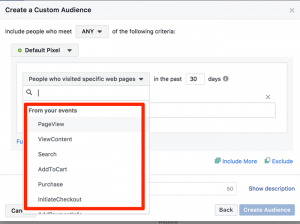I’ve been stuck in something of a creative rut for the last year or so. I’ve been sitting on two (or maybe three) tracks for an EP since last January, unable to push through. It’s gotten to the point where, honestly, I haven’t even been enjoying making music these last several months.
I tell you this because, in a post detailing the difference between the Blooper, Mood and Habit pedals (which are all built around a similar core), Chase Bliss founder Joel Korte brags that the Habit “could get anyone out of a creative rut.” And if you only have one takeaway from this review, it should be that Joel is probably right.
Now, I’m not going to say that the Chase Bliss Habit is for everyone. It’s pricey, it’s weird and it can be complicated. But it’s also wholly unique and surprisingly versatile. It is, at its core, a delay pedal – a rather crisp and clean digital delay. And you can certainly treat it as such and get great results. It has tap tempo, MIDI capabilities and can handle everything from short slapback echo to Frippertronics-esque slowly degrading loops. But, if that’s all you use it for you won’t get your $399 worth.
Chase Bliss prefers to call Habit a “musical sketchpad,” and while that’s an apt description, it might confuse some people. This isn’t a looper in the traditional sense, so don’t expect to lay down a four-chord backing track and start writing melodies over it. Instead this is more of a happy accident machine where you might stumble into an inspiring idea.
Those are the two extremes, however. There’s a world of sounds in between for you to explore on the Habit, from tape-like warbles, to complex multitap delays and glitchy stutters. The trick here is that Habit is always recording incoming audio to a three-minute digital “tape” loop. And then you can add effects, harmonize with yourself, scan through what you played one minute ago or just emulate a casino full of slot machines.
Hardware
What’s impressive is that Chase Bliss manages to cram so much range into a standard-size guitar pedal. Part of that is down to the company’s extensive, but standardized control scheme. Basically, every Chase Bliss pedal (save for its Automatone series) is built around the same core platform that features six knobs, four three-way switches, a pair of foot switches and 16 dip switches on the back. It’s a lot of variables crammed into a very small space, and it can be quite intimidating.
But the manual for the Habit is comprehensive, easy to understand, fun and, dare I say, beautiful? It’s filled with illustrations and examples that help make what is a reasonably complicated device seem approachable. And it’s presented in a Field Notes-style booklet with a cardboard cover. It’s probably a silly thing to highlight, but this might be the best product manual ever.
The hardware itself is likewise a step ahead of the competition. Now, there’s not a ton of ways to stand out in the pedal game if you’re sticking to standard sized metal enclosures, but Chase Bliss opts for knurled metal knobs and the LEDs are nestled inside tiny metal calderas. They’re small touches that elevate a Chase Bliss pedal above other players in the market, which is important when you’re charging this much.
The two primary knocks against it on the hardware front are a lack of stereo outs and a nonstandard ¼-inch MIDI connection. Frankly, I don’t think the former is a major issue. I have a small handful of stereo pedals in my collection, and I almost never actually use them in stereo. The MIDI port on the other hand is a bit of a downer, especially now that ?-inch TRS MIDI is a widely adopted standard. Instead you need a special adapter box or a custom wired cable to connect other MIDI gear to Habit.
Also, because Chase Bliss has to make room for the dip switches all the jacks are on the sides of the pedal. This is hardly dealbreaker, but connecting audio, power and expression does eat up a little more real estate on your pedalboard than if the jacks were on the top.
Modifiers
Those complaints are minor nitpicks, though, and they almost don’t matter once you start playing. Even when using it as a relatively straightforward delay pedal the Habit shines, especially once you start exploring the modifiers you select using the three-way switches across the middle. (The fourth switch just above the foot switches is used for selecting and saving a pair of presets, and we’re just going to ignore that.) The middle switch changes between the two banks or turns the modifiers off, while the left switch selects which specific modifier you’re using and the knob above it dials in the amount and style of said modifier.
Each modifier has two different variations, depending on which way you turn the knob. For example, modifier A-1 is a stepped speed change quantized to fifths and octaves. To the right of 12 o’clock plays the repeats forward, while to the left plays them in reverse. This means that even if you don’t touch any of the other controls you have seven distinct delays at your fingertips.
The other modifiers include tape-like lo-fi effects, smooth pitch changes and a multimode filter. But the two most interesting are probably the trimmer and the dropper. Trimmer slices bits of audio off the start or end of a note and can be used to create complex stuttering rhythms. Meanwhile Dropper causes your signal to drop out, appropriately enough. Turn the Modify knob to the right and you’ll find rhythmic patterns; to the left and the echoes will randomly disappear. Crank that and you get heavily degraded, almost granular effects (which you can really lean into with the Spread and Scan knobs, but more on that later).
Controls
The controls across the top are, more or less, what you’d expect on a standard delay pedal. There’s level, repeats (feedback) and size (time). One important thing to note is that, as you increase or decrease the size, there is no change in pitch. The ones below it though are where the interesting things happen. We’ve already mentioned the modifier knob, but next to that are the Spread and Scan controls. Spread controls a second playback head which allows you to get standard multitap echoes at lower settings, but as you start to increase it, it reaches further and further back into the past. It’s less of a delay and more of a sonic time machine. If used smartly, you can create cascading counter melodies as you play along with yourself from 30 seconds ago.
Scan has two modes: auto (default) and manual (controlled by one of those dip switches on the back). In auto mode it introduces random snippets of old audio. The Scan and Spread knobs interact, so as Scan starts rummaging through the past, it drags that secondary Spread playhead with it. This is important because, as you crank up the Scan, you’re making Spread all the more unpredictable. This can be fun if you’re looking for glitchy chaos, or frustrating if you’re trying to lock into a groove with yourself.
If you set Scan to manual, you’re picking out the moment of your choice from the last three minutes. This is particularly handy if you’re using the Habit as a musical sketchpad, since you can record three minutes of noodling and then go back and find the bits you really want to savor.
There is a middle ground, which is my preferred method of using Scan. If you press and hold the left foot switch it momentarily sets Scan to maximum and then snaps back to where you have it when you let go. If you use this with Scan set to zero, you’re able to insert controlled bits of chaos exactly when you want to. And since both Spread and Scan are linked to Size everything stays in sync pretty nicely.
Then there’s the three-way switch on the far right labeled In-Out-Feed. This is probably the most powerful control on the entire pedal. In the middle, or out, position you get a predictable sound where every echo sounds exactly the same. When switched to in, each echo is fed through the modifier circuit again. This can give you sparkling chimes that climb in pitch until they send your dog running for cover. Or echoes that crumble more with each repeat. Or, notes that get shorter and shorter as the Trimmer modifier shaves more and more off.
To the right is Feed mode, which sends the output of the Habit right back through the input creating echoes of echoes and accumulating modifier effects off into infinity. This is where things can get really wild. This can get you metallic, almost reverb-like drones. But it also means that, if you start turning knobs, those changes are printed to the internal “tape loop” because what’s coming out is coming right back in again and getting recorded. This becomes even more powerful when combined with the Collect dip switch on the top.
Collect
By default, Habit is always recording to a three-minute loop, but it overwrites what happened three-minutes ago. If you turn on Collect, then the loop is never erased and you’re able to overdub. This is where you can start building sketches of songs and then, by turning on Feed, record what happens as you tweak knobs and dramatically transform what you played.
Now, I’ll be honest: I haven’t had a lot of success using this to make an actual song. The quirks of Habit also mean that this mode is best suited for particular styles of music. You can create odd stuttering and loping guitar pieces, or ambient washes, but probably nothing with a traditional song structure. But, it’s still quite enjoyable and meditative to sit and slowly build up a composition by recording three minute passes of music. And that is one other thing to keep in mind: The internal loop is three minutes and there is no way to shorten it if you only want to record 30 seconds, so using Collect requires patience. This is a great way to find interesting sounds for sampling, though. Running an instrument into the Habit, and then running the results into the SP-404 has been incredibly fun.
That’s the other big takeaway you should have, by the way. The Habit is fun. Despite its complexity and occasional unpredictability, it’s easy to get lost in the joy of creating new and bizarre sounds.
Dip switches
The thing that lends Habit its greatest sense of complexity is definitely dip switches on the top. They’re one of the defining features of a Chase Bliss pedal. They basically come in two flavors: expression and customization. You can, for instance, flip the Dry Kill switch to get rid of your unaffected tone. While there is some lag introduced by the pedal, it’s still useful for getting synth-like arpeggios or processing audio that you’re not playing live. This is also how you enable things like Collect, Manual Scan and latch. Normally, if you hold the left footswitch momentarily it automatically maxes out the Scan parameter, while holding the right loops the last echo. With latching on those will continue until you hold down the footswitch again.
The Expression and Ramping switches add movement or allow you to control specific parameters. For example, if you connect an expression pedal and then flip the Size switch, you can quickly increase or decrease the echo time with your foot while playing. But, all Chase Bliss pedals also have an LFO which the company calls Ramp or Bounce. Ramp can be one-shot or looping (Bounce), and can be a triangle wave, square or random. So you could, for instance, set the Modify parameter to increase and decrease pitch over time to create arpeggios, or randomly change the amount of Spread to sprinkle in bits of the past.
Ramp and expression can be in either rise or fall mode. Meaning, that either it sweeps a parameter up from the minimum to where you’ve set the knob, or down from the maximum to the knob setting.
One thing to note: When you enable Ramp the level knob changes the speed of the Ramp, rather than volume of the effect. So, set your levels first before you start messing with the dip switches. If you want to change the level while Ramp is enabled, you need to hold down the right footswitch while you turn it. Oh, and if you connect an expression pedal without flipping any parameter switches on the back, it controls the level. This is handy if you want to fade in the delay only occasionally while playing.
The competition
Obviously, if you don’t need or want all these crazy features and are just looking for a straightforward delay pedal, don’t get a Habit. It can do typical delay stuff, but you don’t need to spend $400 on a “typical delay.”
There are delay pedals out there that cover some similar ground. For instance, the $299 Red Panda Raster 2. It’s a digital delay with pitch and frequency shifting, plus internal modulation. But it doesn’t really have equivalents of the Scan, Spread and Collect features, which are pretty unique to Habit.
The more likely choice you’re trying to make is between three different Chase Bliss pedals: the Mood, Blooper and Habit. All three are related, but their strengths lie in specific areas.
Like Habit, Blooper is a collaboration with YouTuber Knobs (which has since joined Chase Bliss) and its focus is on looping. It starts with the same core conceit of any looper: record audio and then play it back. Its unique features are in how you mangle that loop by overdubbing and applying modifiers. It’s probably the most complex of the three, and even has a browser-based interface where you can export loops and swap in different modifiers. I’d actually say “musical sketchpad” is a better fit for Blooper.
Mood grew out of the development of Blooper. It’s a more straightforward affair. It has an always-on recorder, similar to Habit, but it plays shorter “microloops” and includes reverb for added ambience. If you want spacey granular effects without having to search too long for sweet spots, then Mood is your better bet.
Wrap-up
Habit, on the other hand, is focused on delay and freeform looping. Its strengths are in creating complex rhythmic echoes and unpredictable melodic interplay. It’s just as at home on a pedalboard supported by other effects as it is on a desktop being manipulated like an instrument in its own right. It has many of the same strengths as the Blooper and Mood, but it’s also probably the most experimental of the bunch. It’s also more difficult to tame – Habit is clearly chaotic neutral. It doesn’t care about rules or tradition, it wants only to be free to wreak musical havoc. And that makes it an undeniable blast.
(11)
Report Post







